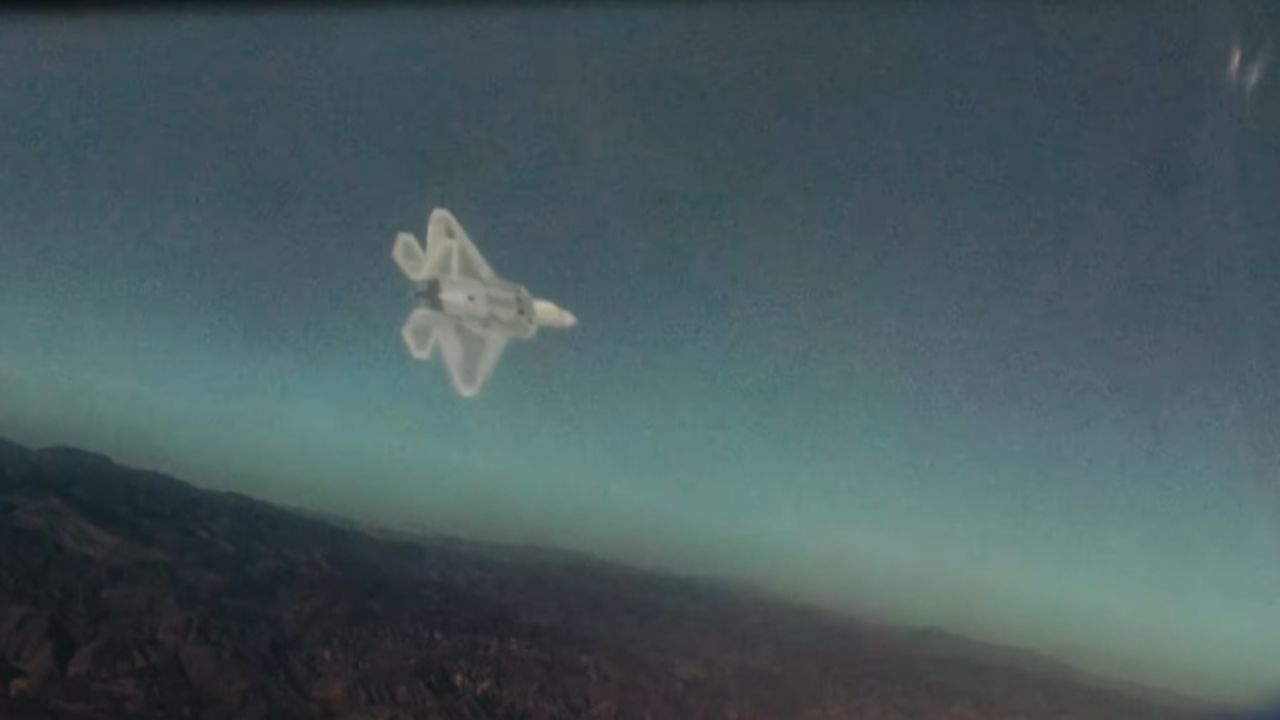Augmented reality systems are on the verge of making a huge impact on how America's military fights and trains. When it comes to the latter, one company, aptly named Red 6, has identified an inflection point where cost and existing capabilities become problematic for America's tactical aircraft communities—training for air-to-air combat.
While contractor aggressor services have ballooned in recent years to bring down the cost of providing bad guys for frontline fighter pilots to train against, while also upping the potential density and complexity of the threats that can be portrayed, Red 6 thinks it can do much of this without any other jets, pilots, and millions in yearly fuel costs all.
This can be accomplished by moving the adversary aircraft into the synthetic realm via augmented reality goggles. Now we finally get to see exactly what the pilots do when donning Red 6's increasingly capable helmet-mounted hardware.
You can read all about Red 6, where the company has been, and where it plans to go, in this in-depth feature interview with its founder and former F-22 Raptor pilot, Daniel Robinson. In it, he talks about how Red 6 started out by creating a huge geometric open-sided cube in the sky to test the original idea and has progressed with better hardware and software ever since.
The tech has developed to the point where pilots are actually dogfighting synthetic AI-enabled fighters in augmented reality using Red 6's gear. And, of course, without any actual flying hardware constraints, any aircraft with any performance capabilities can be accurately represented. So what does this look like from the pilot's perspective? We can finally share the answer to that question below:
Red 6's system is called the Airborne Tactical Augmented Reality System (ATARS). The company officially describes ATARS as "the first wide field-of-view, full color, demonstrably proven outdoor Augmented Reality solution that works in dynamic outdoor environments. ATARS allows Virtual and Constructive assets into the real world by allowing pilots and ground operators to see synthetic threats in real-time, outdoors. and critically, in high-speed environments. By blending Augmented Reality and artificial intelligence and using both the indoor and outdoor space around us as a medium, Red 6 has redefined the limits of how the world will experience, share, and interact with its information."
Red 6, which just closed a $30M Series A financing round, with the vast majority of those funds coming from Snowpoint Ventures, is on the attack and plans on spreading its innovations into other combat domains in the future, just as we discussed in our big interview piece. Still, the potential for this system to revolutionize one of the most costly aspects of preparing for modern warfare—air-to-air combat training—is becoming very real.
The savings from introducing this system, even to a limited degree, for some recurrent air-to-air training would be massive in terms of all the costs involved, including the wear-and-tear these training flights impose on the adversary aircraft, which is usually a similar fighter from the unit's own squadron.
The company scored another big win last March when Dr. William Roper, who left his previous job as Assistant Secretary of the Air Force for Acquisition, Technology, and Logistics earlier this year, and is considered a highly influential visionary by some, joined Red 6's advisory board. This vote of confidence from one of the Pentagon's leading minds on airpower definitely helped the company's position as a potential major market disruptor.
As for what comes next, Red 6 is about to enter into phase three of their Small Business Innovation Research (SBIR) initiative with AFWERX, which will see ATARS deployed aboard T-38 Talon trainers of the 586th Flight Test Squadron at Holloman Air Force Base in New Mexico. There, Air Force pilots will put ATARS through its paces. The next step will be integrating it into an F-16 Viper fighter jet, which will bring another level of challenging performance to the concept.
At the very least, we can hope that allied air forces will have another tool to better and more efficiently train their pilots where applicable in the not so distant future, and in essence, augmenting the reality of their training capabilities.
Source: thedrive

